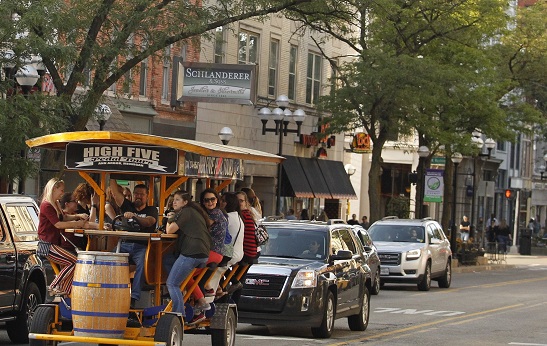AA Spark: Ann Arbor named best place to live for families by Fortune Well

Last month, Fortune Well launched the inaugural Fortune 25 Best Places to Live for Families ranking, highlighting areas in the U.S. where multigenerational families are most likely to have access to critical resources, community support, and financial well-being.
The winning city, Ann Arbor, is a midsize community that is home to top-ranked University of Michigan, and its educational prowess extends across the spectrum with the vast majority of the district’s K-12 schools ranking above average. The proximity to the university also delivers a big wellness benefit, with the University of Michigan’s health system and academic medical center earning top marks for patient safety since 2012 — one of only 23 U.S. hospitals to do so.
Nearly half of Americans who are raising children under the age of 18 are also shouldering the responsibility of regularly caring for their aging parents in some capacity, according to a survey of about 1,200 respondents conducted by the Harris Poll on behalf of Fortune in August.
This so-called “sandwich generation” is the target population of the Fortune Well ranking. Location can make all the difference when Americans are managing caregiver roles. High-quality schools, reliable health care, ample senior support, and safe neighborhoods help bolster the well-being of multigenerational families and mitigate stress for caregivers.
Fortune found that seven in 10 Americans with at least one living parent say they expect to help their aging parents regularly in the future, with 88% of millennials planning to care for their baby boomer parents.
With data provided by Caring.com, CVS, Healthgrades, Sharecare, and Witlytic, Fortune evaluated nearly 2,000 cities, towns, suburbs, exurbs, villages, and townships that had between 25,000 and 750,000 residents across all 50 states in the U.S. in order to determine the best places to live for families within this category. Fortune found that communities in the West, Midwest, and mid-Atlantic were more likely to offer better access to quality hospitals and doctors, solid public schools, and support for older residents versus in the Southeast, and at more affordable rates than most coastal metros like New York City and Los Angeles.
Fortune Well is presented by CVS Health.
METHODOLOGY
To select the top 25 Best Places to Live for Families, Fortune evaluated nearly 2,000 cities, towns, suburbs, exurbs, villages, and townships that had between 25,000 and 750,000 residents across all 50 states in the U.S. This range provided a broad universe of places that offered high-quality amenities in communities that had a hometown feel.
To analyze each place, Fortune collected more than 215,000 unique data points across five broad categories:
- Education
- Aging resources
- General wellness
- Financial health
- Livability
This ranking focused on families, particularly the subset of Americans who are shouldering the responsibilities of raising their own children while caring for aging parents. With their needs in mind, Fortune put extra emphasis on factors that met the unique challenges of this cohort — such as the quality of local school districts, graduation rates, nearby college affordability, the number of quality nursing homes, assisted living communities, home health care agencies, risk of social isolation among older residents, and access to solid healthcare providers.
To ensure the winning places were cities and towns where residents could afford to buy homes without breaking the bank, Fortune eliminated locales with home sale prices that were more than twice as high as the state median and/or more than 2.75 times higher than the national median.
Additionally, Fortune wanted to highlight places that offered diverse neighborhoods. To that end, the editors cut any town where more than 90% of its population is white, non-Hispanic. From there, Fortune then compared the racial breakdown of a place against state benchmarks, eliminating any place that was less diverse than either state or national medians.
To provide a broad range of options, the editors determined there could be no more than two places per state among the top 25 places and no more than one winner per county or major metro area within a state.
View the complete methodology.
ABOUT FORTUNE
Fortune drives the conversation about business. With a global perspective, the guiding wisdom of history, and an unflinching eye to the future, we report and reveal the stories that matter today—and that will matter even more tomorrow. With the trusted power to convene and challenge those who are shaping industry, commerce, and society around the world, Fortune lights the path for global leaders—and gives them the tools to make business better. www.fortune.com

























